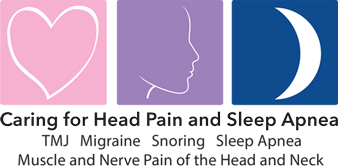

Diplomate American Board of Orofacial Pain
9615 Brighton Way, Suite 323
Beverly Hills, CA 90210
888.981.8981
First Line Medications for Neuropathic Pain
Neuropahtic pain is a type of nerve pain. Treating neuropahtic pain involves "trying this, trying that" to see what helps manage the pain the best. Three first line medications are carbamazepine, gabapentin, and oxcarbazepine. Some providers do not feel gabapentin is a good first choice but I always like to discuss it as an option.
Carbamazepine
Initial Dose
100 mg twice daily (200 mg/day total).
Some clinicians may start with 100 mg once daily in frail or elderly patients to minimize side effects.
Titration
Increase by 100–200 mg every 3–7 days depending on response and tolerability.
Titration is typically slower in older adults due to risks of dizziness, ataxia, and hyponatremia.
Usual Effective Dose
200–600 mg twice daily (400–1,200 mg/day).
Most patients respond within this range.
Maximum Dose
1,200 mg/day (occasionally up to 1,600 mg/day), divided every 8 or every 12 hours.
Doses above 1,200 mg/day usually add little benefit and increase risk of adverse effects.
Blood Monitoring
Complete blood count (CBC), liver function tests (LFT), electrolytes (especially sodium) at baseline and every three months.
Risk of:
Agranulocytosis, aplastic anemia (rare but serious), hyponatremia (SIADH).drowsiness, dizziness, diplopia, gastric upset.
Key difference vs. oxcarbazepine: carbamazepine requires more lab monitoring (CBC, LFTs) due to hematologic and hepatic risks, while oxcarbazepine mainly requires sodium monitoring.
Oxcarbazepine
Oxcarbazepine is commonly used as a first-line alternative to carbamazepine. The dosing is similar to its use in epilepsy, but typically titrated more gradually for tolerability:
Initial Dose
300 mg twice daily (600 mg/day total).
Titration
Increase by 300 mg every 3–7 days, depending on patient tolerance and response.
Some clinicians may start even lower (150 mg twice daily) in older or sensitive patients.
Usual Effective Dose Range
600–1,200 mg/day in divided doses (BID).
Some patients require up to 1,800 mg/day, but higher doses are limited by side effects (dizziness, somnolence, hyponatremia).
Maximum Dose
Up to 2,400 mg/day (divided BID), though this is rarely needed for trigeminal neuralgia.
Blood Monitoring
Serum sodium (risk of hyponatremia, especially in elderly or if combined with SSRIs/diuretics) at baseline and every three months.
Watch for dizziness, diplopia, somnolence, rash, or GI upset.
Unlike carbamazepine, oxcarbazepine does not require routine CBC or liver enzyme monitoring, but sodium monitoring is essential.
Gabapentin
Initial Dose
300 mg at bedtime (or 300 mg once daily).
Titration
Increase by 300 mg every 2–3 days as tolerated.
Common schedule:
Day 1: 300 mg at night
Day 4: 300 mg twice daily (600 mg/day)
Day 7: 300 mg three times daily (900 mg/day)
Continue to titrate upward in 300 mg every fourth day increments until effective or side effects occur.
Usual Effective Dose
900–2,400 mg/day in 3 divided doses.
Some patients may need up to 3,600 mg/day, though this is less common.
Maximum Dose
3,600 mg/day (divided TID).
Beyond this, efficacy does not improve but side effects increase.
Monitoring & Precautions
Renal function adjustment required (gabapentin is renally cleared).
Common side effects: dizziness, somnolence, ataxia, peripheral edema, weight gain.
Does not require any blood monitoring at baseline or periodically.
Gabapentin is often less effective than carbamazepine/oxcarbazepine for classical trigeminal neuralgia, but it can still be tried as an optioni. It is particularly useful for atypical trigeminal neuralgia or neuropathic facial pain syndromes.






